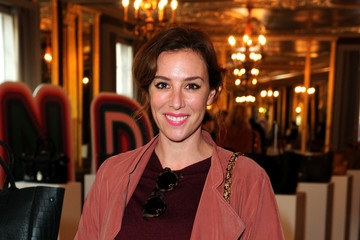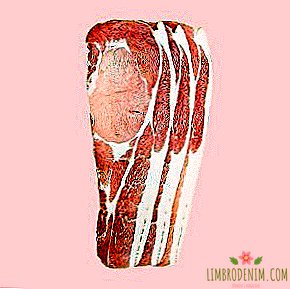Herstory: Does the story of women require separate study?
Women's and gender history - termswhich today already seems to be heard, but to the majority still seem to be something incomprehensible. What is behind these names? Does the history of women require a separate discipline? How and what do gender historians study today? All this is told by the gender historian of the USSR, the teacher of the School of Cultural Studies of the Higher School of Economics Ella Rossman.
Text: Ella Rossman, Alexandra Savina

Women's history
If you try to briefly explain the meaning of women's history (in English it is called women's history), it is better to call it the history of women. This discipline and activist project originated in the United States and is closely related to second-wave feminism. The main task of women's history was, in fact, to return to the history of women - “discover” a woman as an important part of world history and tell what role she played in the usual events.
Prerequisites for such an approach appeared at the beginning of the century - for example, in the 1920s, the French school "Annals" called for looking at studying history differently, moving away from describing the life of "great people" and turning to the everyday life of different classes, and Sylvia Pankhurst wrote about the role of suffragistic movements in history. Nevertheless, for a long time, these ideas remained without proper attention: as far back as the 1960s, the notion that “real” scientists should be involved in politics and the history of wars, and “life and morals” - their inheritance were very popular in historical science. colleagues. Because of such hierarchies, women were virtually excluded from texts about historical events. It is clear that the heroines of political history, they became much less frequent than men: for thousands of years they had almost no access to power and big politics. The same can be said about science and art: women could appear here, but they were much harder to get into these areas than men, largely because of the lack of access to art education, and also because of the limitations imposed by the social role "Wives" - serving the interests of the spouse was valued more creativity. For a long time, women were not even counted in the census - for example, in Ancient Rome, they were included in the census only in the third century AD, solely for the sake of taxes.
However, women’s historians called for attention to be paid not only to "male" areas - the labor market and political processes, but also to "invisible" unpaid female labor - emotional work, care for the family and home; offered to look at how personal and political are connected.
In addition, they wanted to draw attention to the undeservingly forgotten female heroines of the past. For example, in early studies on women's history there are the names of Sophia de Condorcet — the writer, translator who organized influential literary salons in revolutionary France, or Elizabeth Blackwell, the first woman doctor in the United States.
In the seventies and eighties, the discipline continued to develop. It became especially popular in the United States and the United Kingdom, and there was a different focus of research in these countries. In the US, greater attention was paid to the contribution of women to culture, to purely female initiatives and special female experience, the role of women in the family and female sexuality — some researchers believed that in order to study the lives of women it is very important to trace how relations between them developed. Among the famous American researchers is Joan Kelly, the author of the famous essay "Did Women Have a Renaissance?" ("Did women have a Renaissance?"). In his work, Kelly questions the traditional attitude to the periodization of history, in particular, to the Renaissance: women for centuries did not have the same rights as men, and therefore the “flourishing” of culture and science bypassed them. "All the progress of Italy of the Renaissance, its economic condition, the structure of estates, its humanistic culture sought to turn a noble woman into a beautiful decorative object, make her modest and chaste and put her in a doubly dependent position - from her husband and from power," she wrote .
In the UK, research was closely linked to the history of work: women's work, wage inequality, the functioning of trade unions. Book Laura Oren, for example, raised the question of the role women played in the British economy. Despite the fact that some of them were not engaged in paid work, they had to distribute the family budget - they often saved food for themselves and for children in order to provide the husband with necessary things, that is, they served as a kind of “buffer” in difficult for the family (and a) times.
The history of women quickly began to gain popularity - by the eighties, dozens of similar courses had already been read in American and European universities. In 1978, Sonoma California County schools in the United States organized a women's history week — it was assumed that at that time schoolchildren would study women's achievements and their role in world events. The initiative was so popular that in 1981 the women's history week became a nationwide event, and in 1987 the United States Congress declared March as the month of women's history.

From women's history to gender
Meanwhile, critics of "women's history" insisted that its separation into a separate discipline does not contribute to greater equality: women's achievements are not embedded in the general system, but run as if in parallel - it seems that this is not part of the chronology of the rest of the world, but a special "women's" chronology .
In 1985, the American researcher Joan Scott took the next step - she suggested not to talk about women, but about gender history. The researcher spoke at a meeting of the American Historical Association, and a year later published the article "Gender: a useful category of historical analysis." According to Scott, “gender history” should not only revive forgotten female characters, but also show the relationship between the sexes in certain historical circumstances and mechanisms for the distribution of power in society. Scott suggested concentrating on studying how the concepts of "male" and "female", gender stereotypes and related traditions formed at different times.
Following Joan Scott, the direction continued to develop. For example, in 1989, the first issue of the English-language magazine Gender & History with two editions was published, in the UK and the USA. And soon, gender opponents had their opponents: they claimed that the history of women would get lost again with this approach, and masculinity studies would take center stage.
Double load
Supporters of gender optics in the study of history is in Russia. True, Natalia Pushkareva, a specialist in the Middle Ages, began to study the status of women in Ancient Russia as early as the eighties, without even realizing that her topic fit into a new scientific discipline.
The gender approach to the history of the Soviet state, in turn, allowed researchers to take a fresh look at the everyday experience of a Soviet person, which is closely related to violence: repression, suppression of dissent, leveling. For Soviet women, apart from other dangers and pressure from the state, life was also connected with reproductive violence. At the official level, they were constantly called for childbearing - from the 1930s he was described as a necessary part of the life of any citizen. At some stages in the existence of the USSR, Soviet women were directly restricted in their rights: from 1936 to 1956, abortions were prohibited, while many did not have access to contraception or protection information. At some point, the only way to plan a family for women in the USSR was abortion, in the period of the ban - underground.
Constant coercion to childbearing was combined in the Soviet state with coercion to work. In fact, this meant that the woman had to be family-oriented, keep an eye on the house and children, and at the same time work - often because it was impossible to cope with these tasks, the grandmothers had to take care of the children. Such a situation of extreme congestion with different tasks is designated by the term “double load”.

Five books
Over the years, the subject of the study of women's and gender history has become more complicated. In the first half of the nineties, a five-volume collection entitled The History of Women in the West from Antiquity to the Twentieth Century was edited by Georges Duby and Michel Perrot, which collected twenty years of research on the status of women at different times, from antiquity to the twentieth century. According to the editors, the task of the collection was not just to make women visible, but also to ask new questions, to show events not in statics, but in dynamics. In the books, much attention is paid to the daily life of women, their participation in the life of society and the specifics of gender roles. The authors also do not pretend to universality, the geography of the collection is limited to Europe and North America (by the way, Russia also exists there).
At about the same time, the International Federation for the Study of Women's History (IFRWH) appeared - it includes associations from thirty-seven countries, from India to the USA, from South Korea to Russia. Science continues to evolve - for example, towards the beginning of zero interest, researchers gradually shifted from describing private life to exploring how private and public in the history of women are combined, how women master "non-female" spheres, and make their way into politics and science. There was also an interest in sexuality (critics say that the coverage of this topic was not enough for the five-volume man about the history of women), control and restriction of sexuality and violence - for example, military conflicts can be viewed through the prism of military rape.
In the 2000s, like the feminist movement, gender history becomes intersectional, taking into account the concepts of religion, origin, and economic situation; studying the influences of different cultures and globalization on ideas about gender and on the roles that society assigns to men and women. In addition, researchers today are interested in migration and how gender and gender stereotypes influence this process.
In order to emphasize how large a role the male gaze played throughout history, in the seventies, feminists suggested using the term "herstory" instead of "history" ("its history" instead of "its history"). The word did not become common, but it is used from time to time when it comes to women's achievements, in the names of feminist projects or in pop culture - say, it is often used by drag-diva Roux Paul. But in this ingenious word formation reflects the desire for equality - both historians and women themselves ...
Photo: loc.gov, wikimedia (1, 2)





